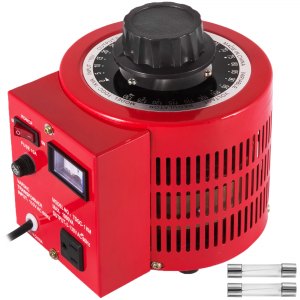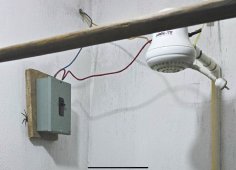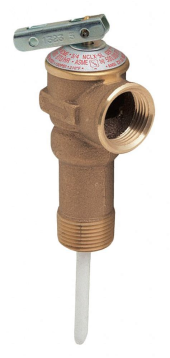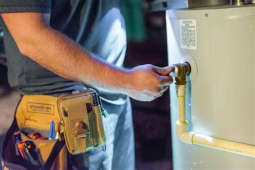This may help with some of the confusion of how PWM water heater controls work. The upper YELLOW scope trace is of only the AC portion of the capacitor bank which was sensed thru a capacitor to block the DC. The ramp up is the capacitor bank charging till it reaches the ON voltage. Ramp down is the heater turned on till it reaches the OFF voltage. This is only a few volts difference on the 120V array which at the time is producing 664W.
The lower GREEN trace is the FET turning on and off as measured at the drain of the mosfet. Low is zero volts indicating that the FET is turned on. The FET will turn on for a maximum of 10ms. This maximum corresponds to 50Hz. If after that time the capacitor bank has not reached the low turn off voltage, the FET will turn off for 0.64ms. This is the arc interrupt in action, see #1. Note #2 on the YELLOW trace which indicates the capacitor bank is recharging during this time.
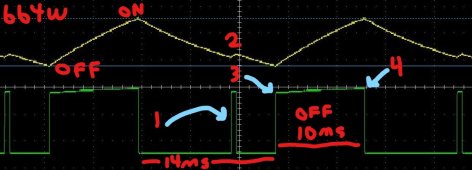
Following the arc interrupt, the FET turns back on again for another 4 ms until the capacitor bank reaches the low turn OFF voltage #3. The FET then turns OFF for about 10ms (this time is not fixed) till the capacitor bank recharges again #4. Heating element is connected to positive of battery bank to drain of FET. Scope GREEN trace is inverse of what you normally expect of high being an on condition. ON is represented by a low state.
As stated before, the maximum ON time is never more than 10ms. That 10ms OFF time could be anything from 1ms to several hundred ms. The lower the light level, the longer it will be. The ON time can be as low as .5ms. It just can't be more than 10ms so any arc can be extinguished. Other manufacturers with smaller capacitor banks will have on times of far less than a quarter ms.
Point #3 shows the actual turn off voltage in relation to the zero voltage of the low GREEN trace. Point #4 is the turn on voltage. To be efficient you want this differential to be under 5%. Around the MPP voltage of the solar panel the power is relatively flat for several volts. Panels are current sources, and you want to maintain a constant current with as little fluctuation as possible. The capacitor bank must be large enough that the panel can keep dumping current into it in the off periods. If there is a wild fluctuation of current, then you are not harvesting all the power possible.
Some designs may use higher frequency, fixed or variable cycle times, arc interrupt or not. It all ends up as a PWM duty cycle. The voltage going to the element is always the same independent of light level as is the current. It is either on or off with only the duty cycle changing. A design can use a FET or IGBT as the output switch. IGBT were preferred for a long time when voltages were over 200V. The downside was when there were turned on there was always 1.5V to 2V across them when on. At full power that would be about 17W of heat which had to be dissipated. FET typically have very low on resistance and can produce little heat. Higher voltage FET in the past had much higher on resistance once you were over 100V. That increased resistance made the heat produced the same around 250V with the IGBT gaining an advantage. Today low resistance high voltage FET are not exotic. I use two FET in parallel which reduces the heat produces to one quarter of that of a single FET. An extra FET is a deal compared to having to use a fan and having extra cabinet heat. It is actually better than that because when a FET heats up its resistance can easily double, producing even more heat.
Selecting a heating element is the same as for direct connect. Find the rated MPP voltage listed on the panel and divide that by the panel MPP current (as long as that is under the controllers rating). What others won't mention is shade. Four panels in series is typical for resistive water heating systems. If two of those panels go into bypass a PWM MPPT controller will never give the true MPP of the array. That is because the heater element resistance would need to be half of that it was designed for. It would be perfectly fine to operate with this lower resistance with a controller designed for that. Most aren't because capacitor banks cost and are not small. I actually test mine with 45A pulses. The good news is this should typically, be a rare case. In fact, natural power point controllers (fixed voltage with temperature tracking) work almost as good on a daily basis.
I hope this explains solar PWM water heating.



